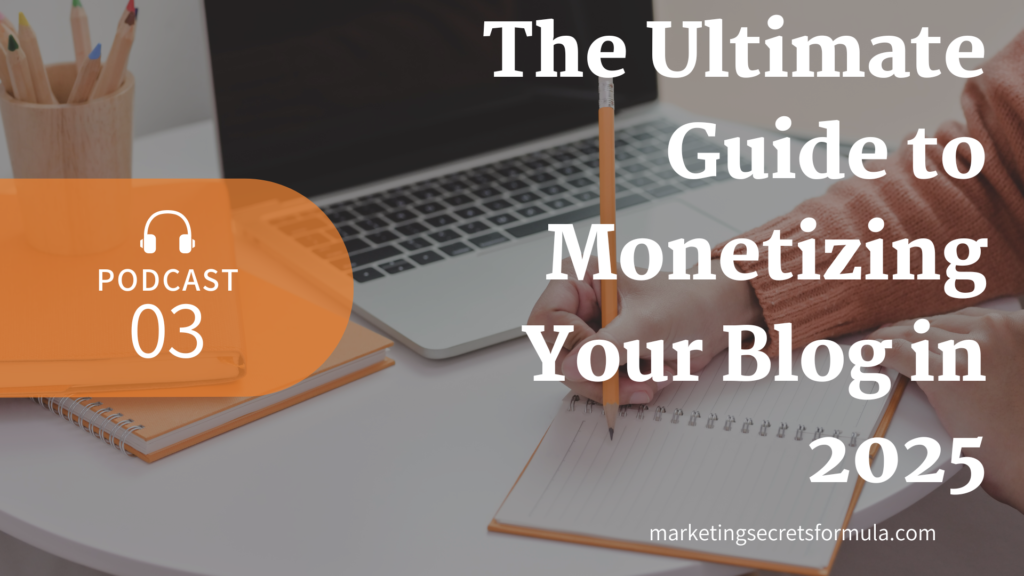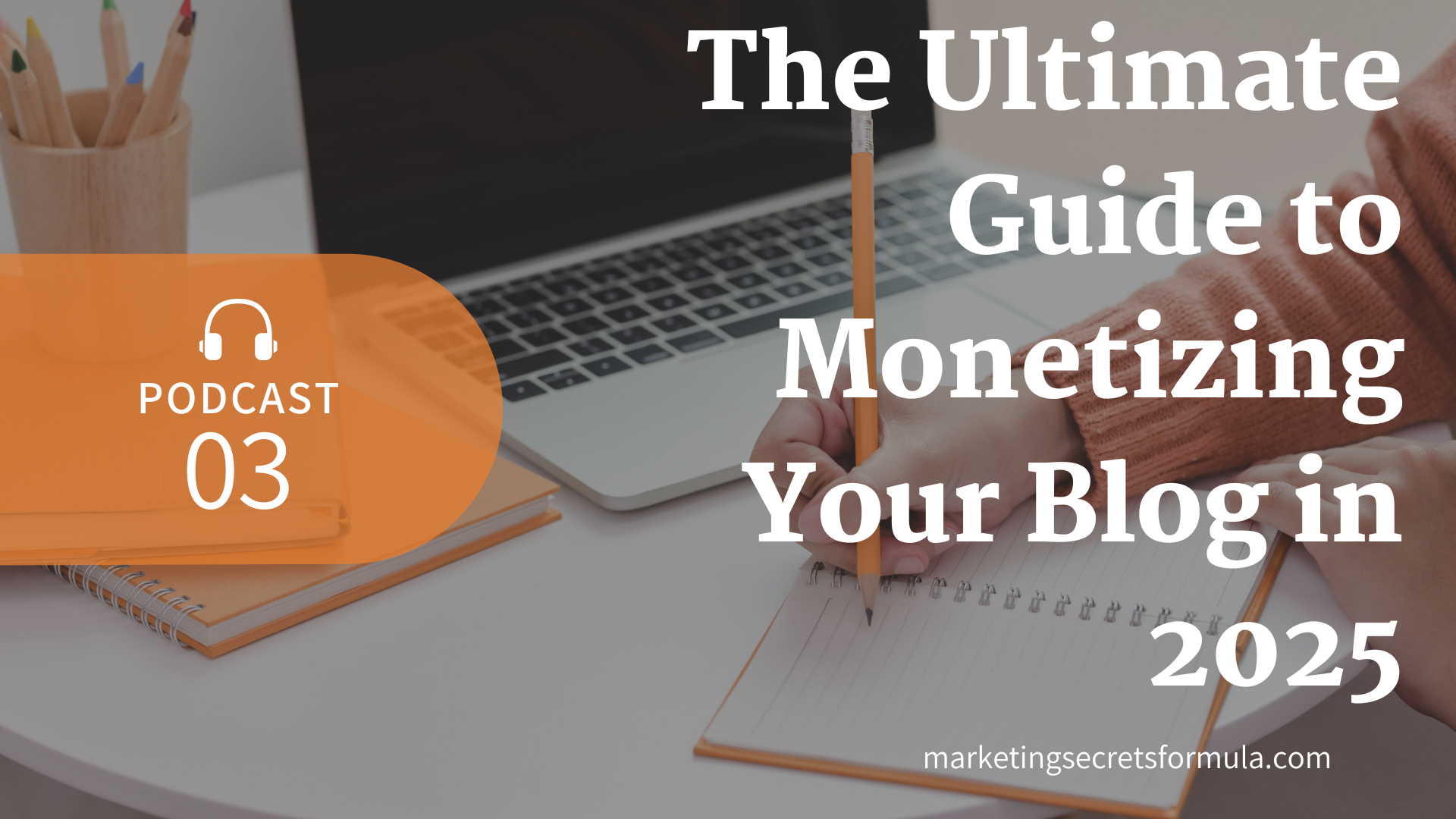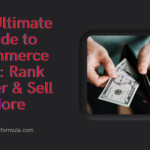Welcome to my article “The Ultimate Guide to Monetizing Your Blog in 2025” So, you’ve got a blog. Maybe it’s a cozy little corner of the internet where you share your love for gourmet cupcakes, or perhaps it’s a sleek hub for tech enthusiasts dissecting the latest gadgets. Whatever your niche, you’re here because you’ve realized something important: passion is great, but passion that pays the bills? Even better.
Welcome to the wild, wonderful world of blog monetization in 2025, where turning your words into wealth is more than just a dream—it’s a highly achievable goal. But let’s not sugarcoat it: the blogging landscape has changed (again). Gone are the days when slapping a few banner ads on your homepage guaranteed a steady stream of income. Today, it’s all about strategic moves, diversified income streams, and, yes, occasionally hustling like your grandma at a bingo tournament.
In this guide, we’re diving into the latest and greatest ways to monetize your blog this year. From leveraging affiliate marketing to creating digital products that sell like hotcakes, we’ll cover it all. Whether you’re a seasoned blogger looking to boost your revenue or a newbie just trying to keep your blog’s hosting fees afloat, you’re in the right place. Ready to transform your blog from a side hustle into a money-making machine? Let’s get started—2025 style.
What do you think of this tone and flow? Would you like me to tweak anything or jump into the subtopics?
Access My Proven Tested Formula for $50-$100 Daily Income – Watch This FREE Video Now >>>

Understand Your Blog’s Monetization Potential
Before diving headfirst into the world of monetization, it’s crucial to ask yourself one key question: Does my blog have what it takes to make money? Think of it as a self-assessment, like figuring out if you’re ready to adopt a pet. Sure, you want it, but are you prepared for what comes next?
The first step in understanding your blog’s potential is to evaluate your niche. Not all blog topics are created equal when it comes to monetization. If you’re writing about underwater basket weaving (an actual thing, by the way), your audience might be passionate, but it’s also going to be…niche (pun intended). On the other hand, blogs about personal finance, health, and tech tend to attract larger audiences and offer a broader range of income opportunities.
Next up: your audience size and engagement. A small but highly engaged audience can be more lucrative than a massive, disengaged one. Think about it: would you rather have 10,000 visitors who skim your content or 1,000 die-hard fans who hang on your every word and trust your recommendations? Tools like Google Analytics and social media insights can help you gauge your traffic and engagement levels. Spoiler alert: obsessively refreshing your page views doesn’t count as “analyzing data.”
Finally, consider your blog’s unique value proposition (UVP). What makes your blog stand out in a sea of millions? Is it your quirky sense of humor, expert knowledge, or unparalleled ability to explain complex topics? Your UVP is what attracts readers and keeps them coming back—and it’s also what makes your blog appealing to advertisers, brands, and potential collaborators.
Once you’ve got a handle on these three areas—niche, audience, and UVP—you’ll have a clear picture of your blog’s monetization potential. Think of it like prepping a recipe: the better your ingredients, the tastier the outcome. And trust us, the outcome of a well-monetized blog tastes a lot like financial freedom.
Display Advertising: Maximizing Revenue with Ads
Ah, display advertising—the OG of blog monetization. It’s like the bread and butter of the blogging world, except sometimes the butter is spread a little thin. Still, when done right, ads can be a reliable and steady source of income. The trick? Maximizing revenue without turning your blog into an ad-riddled carnival.
Let’s start with the basics: how display ads work. In essence, you’re renting out bits of your blog’s real estate to advertisers. Platforms like Google AdSense and Media.net act as middlemen, connecting you with advertisers and serving up ads that (hopefully) appeal to your audience. Advanced networks like Ezoic and AdThrive, which cater to bloggers with higher traffic, offer even better payouts and optimization options. Think of it like graduating from a cozy food truck to a five-star restaurant.
Now, let’s talk strategy. The key to maximizing ad revenue lies in ad placement and user experience. Sure, plastering ads everywhere might seem like a good idea, but no one wants to visit a blog that feels like a game of “Where’s the Content?” Instead, focus on strategic placements—above the fold, within the content, and at the end of posts tend to perform well. Just make sure your ads complement your design, not overwhelm it. Nobody likes a messy house, even a virtual one.
Another crucial factor is traffic. More visitors equal more eyeballs on your ads, which equals more revenue. Simple math, right? But don’t rely on sheer luck to boost traffic. Focus on SEO, shareable content, and social media promotion to bring in consistent, high-quality visitors. After all, ads only work if someone’s actually there to see them.
Access My Proven Tested Formula for $50-$100 Daily Income – Watch This FREE Video Now >>>
Finally, keep an eye on performance metrics. Use tools provided by your ad network to monitor impressions, click-through rates, and revenue. This isn’t a “set it and forget it” situation—adjust placements, experiment with formats, and ditch underperforming ads. Think of yourself as an ad DJ, constantly tweaking the playlist to keep the party (and the revenue) going.
With the right balance of strategy, traffic, and optimization, display advertising can become a cornerstone of your blog’s monetization strategy. Just remember: it’s not about cramming in as many ads as possible. It’s about working smarter, not harder—because who doesn’t love getting paid while doing what they love?
Affiliate Marketing: Partnering with Brands for Profit
If display advertising is the bread and butter of blog monetization, then affiliate marketing is the avocado toast—modern, trendy, and often surprisingly lucrative. The concept is simple: you recommend a product or service to your readers, and if they make a purchase through your unique link, you earn a commission. It’s like matchmaking, but instead of true love, you’re pairing your readers with products they’ll (hopefully) adore.
The beauty of affiliate marketing lies in its versatility. Whether you’re running a blog about travel, tech, or toddler tantrum survival tips, there’s an affiliate program out there that aligns with your niche. Popular platforms like Amazon Associates, ShareASale, and CJ Affiliate offer a smorgasbord of options, while niche-specific programs cater to more targeted audiences. Pro tip: choose programs that genuinely resonate with your readers. Selling ice skates to desert dwellers? Not a winning strategy.
But affiliate marketing isn’t just about slapping links into your content and waiting for the money to roll in. Trust is your currency here. Readers need to feel confident that your recommendations are genuine and not just thinly veiled attempts to make a quick buck. That means only promoting products or services you’ve tried (or would genuinely use yourself) and being upfront about your affiliate relationships. A little transparency goes a long way—plus, it keeps you on the good side of the FTC.
To really maximize your affiliate earnings, focus on strategic content creation. Write detailed product reviews, create how-to guides, or include affiliate links in listicles like “Top 10 Gadgets for Remote Work.” These types of posts naturally lend themselves to product mentions without coming across as overly salesy. And don’t forget to sprinkle links throughout evergreen content—those timeless gems that keep bringing in traffic long after you’ve hit publish.
Finally, keep an eye on analytics. Most affiliate programs provide dashboards where you can track clicks, conversions, and earnings. Use this data to refine your approach, doubling down on what works and ditching what doesn’t. It’s like gardening: some seeds will flourish, while others…well, they were never meant to bloom.
Affiliate marketing is one of the most scalable ways to monetize your blog. Once you’ve laid the groundwork and earned your readers’ trust, it’s like having a virtual salesperson working around the clock. And the best part? No awkward sales pitches required—just you, your blog, and a well-placed affiliate link or two.
Selling Digital Products and Services
If affiliate marketing is like recommending someone else’s party, selling digital products and services is throwing your own—and you get to keep all the cover charges. In 2025, creating and selling your own digital goods or services is one of the most rewarding (and profitable) ways to monetize your blog. Plus, it’s scalable, flexible, and doesn’t involve worrying about shipping delays or inventory. Win-win, right?
Let’s start with digital products. These can range from eBooks and printable planners to online courses and stock photos—essentially anything you can create once and sell repeatedly. The key to success? Solve a problem for your audience. If your blog is about meal prepping, create a customizable meal plan template. If you’re a photography blogger, sell Lightroom presets. Think of it as turning your expertise into something tangible (but also downloadable).
And then there’s services. While they’re less passive than products, services like consulting, coaching, or freelance writing can bring in some serious cash. For example, if you’re running a blog about personal finance, you could offer budget coaching sessions. Or if your blog’s about graphic design, why not sell one-on-one branding consultations? You’re essentially getting paid to do what you’re already amazing at—just in a more direct way.
But here’s the thing: success in this space isn’t just about what you’re selling; it’s about how you’re selling it. Craft compelling sales pages that highlight the benefits of your products or services, not just the features. Nobody buys an eBook because it has “10 chapters”—they buy it because it promises to save them time, money, or stress. And don’t forget to create a sense of urgency—words like “limited-time offer” or “exclusive deal” work wonders.
Access My Proven Tested Formula for $50-$100 Daily Income – Watch This FREE Video Now >>>
Promotion is the next big piece of the puzzle. Use your blog, email list, and social media platforms to shout about your offerings from the virtual rooftops. Better yet, sprinkle in testimonials from satisfied customers or clients to build credibility. Pro tip: people are more likely to buy something if they see others raving about it. We’re all suckers for a little social proof.
Finally, automate where you can. Platforms like Gumroad, Teachable, or Etsy can handle the nitty-gritty of selling and delivering digital products, while tools like Calendly or Zoom simplify scheduling services. This way, you can focus on what you do best—creating amazing content and growing your audience—without drowning in admin work.
Selling digital products and services isn’t just a way to monetize your blog; it’s a way to scale your expertise into something that keeps generating revenue long after you’ve clicked “publish.” Plus, there’s something undeniably satisfying about knowing your creativity and skills are helping others—and paying the bills.
Sponsored Content and Brand Collaborations
Sponsored content and brand collaborations are like the VIP lounge of blog monetization. You get to partner with brands, showcase their products or services, and get paid for it—while still keeping your blog’s personality front and center. It’s a win-win situation: brands get exposure to your audience, and you get a sweet paycheck (or some awesome freebies). But, as with any VIP event, the key to success lies in striking the right balance.
So, how does it work? Sponsored content involves creating blog posts, videos, or social media updates that highlight a brand’s offering. It could be a glowing review of their product, a tutorial using their service, or even a “day in the life” featuring their gear. The golden rule here? Keep it authentic. If your audience gets a whiff of “I’m only doing this for the money,” trust levels will plummet faster than a lead balloon.
Then there are brand collaborations, which go beyond a one-off post. These can include long-term partnerships, exclusive ambassadorships, or even co-creating products. For instance, if you’re a beauty blogger, a brand might partner with you to create a custom makeup palette (yes, your name on the packaging!). These collaborations not only boost your income but also elevate your blog’s authority in your niche.
But let’s address the elephant in the room: choosing the right brands to partner with. Not every pitch that lands in your inbox is a match made in heaven. Prioritize partnerships with brands that align with your blog’s niche and values. If you’re running a vegan recipe blog, partnering with a meat jerky company might not sit well with your audience (or your conscience).
When creating sponsored content, disclosure is non-negotiable. Not only is it legally required in many places (thanks, FTC), but it also maintains trust with your readers. A simple “This post is sponsored by…” line goes a long way in keeping things transparent and professional. Think of it as the “thank you” note that keeps your audience from feeling blindsided.
Finally, negotiate like a pro. Understand your worth as a blogger—your audience, reach, and engagement levels all contribute to your value. Don’t undersell yourself just because you’re flattered a brand reached out. On the flip side, deliver on your promises. Meeting (and exceeding) expectations opens the door to repeat partnerships and glowing testimonials.
Sponsored content and brand collaborations are a fantastic way to monetize your blog while keeping your creative juices flowing. Done right, they not only boost your income but also provide fresh, engaging content for your audience. Just remember: the goal is to create partnerships that feel as natural and exciting as a well-timed meme—authentic, relatable, and a little bit irresistible.
Conclusion
Monetizing your blog in 2025 isn’t just about making money—it’s about building a sustainable, fulfilling online business that lets you share your passions while cashing in on your hard work. And let’s be real, there’s nothing more satisfying than seeing those revenue numbers climb while you’re doing what you love (and maybe even in your pajamas).
From affiliate marketing and display ads to selling your own digital products and landing brand collaborations, the opportunities to turn your blog into a money-making machine are virtually endless. But here’s the thing: there’s no one-size-fits-all strategy. What works for a tech blogger might not work for a lifestyle blogger, and that’s perfectly okay. The key is to experiment, analyze, and double down on what works best for your blog and your audience.
Along the way, don’t forget to keep your readers at the heart of everything you do. They’re the reason you’re able to monetize in the first place, so maintain that trust, deliver value, and be authentic. Remember: a loyal audience is worth more than a million pageviews from people who won’t stick around.
Access My Proven Tested Formula for $50-$100 Daily Income – Watch This FREE Video Now >>>
And finally, monetizing your blog isn’t an overnight success story. It’s more like planting a garden—you nurture it, experiment with what grows, and occasionally pull out some weeds (looking at you, bad brand deals). But with patience, creativity, and a little bit of hustle, you can create a blog that doesn’t just pay the bills—it funds your dreams.
So, whether you’re just starting your monetization journey or leveling up your strategy, take these tips, put your spin on them, and get ready to make 2025 your most profitable blogging year yet. Now go forth, monetize like a pro, and maybe treat yourself to that fancy coffee. You’ve earned it.
Thanks a lot for reading my article on “The Ultimate Guide to Monetizing Your Blog in 2025” till the end. Hope you’ve helped. See you with another article.










